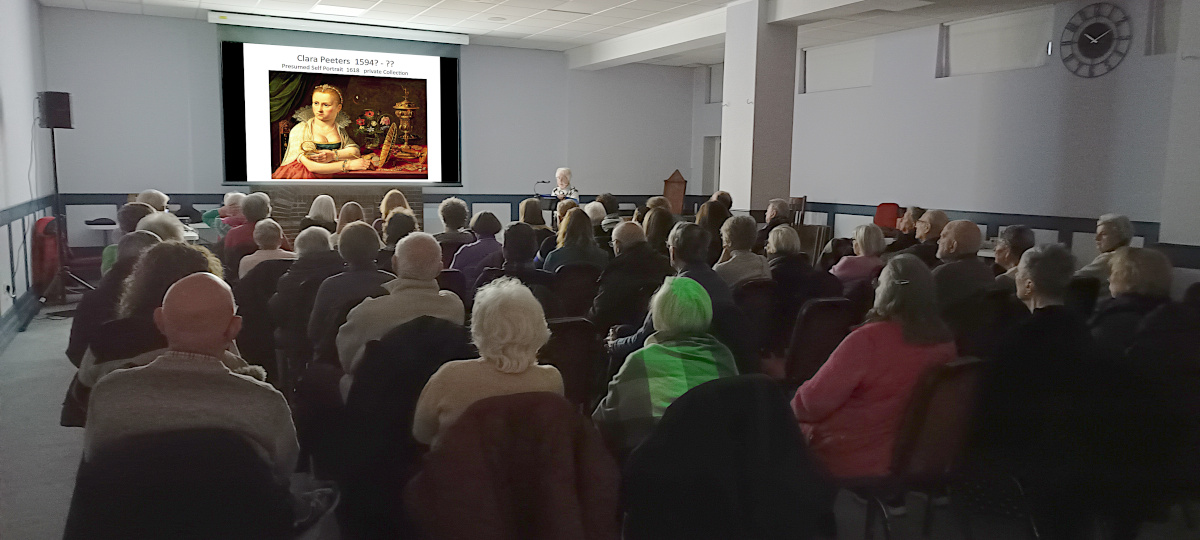Our course on Female Artists continued with Jennifer on Friday 07 February 2025. This time we were reviewing the work of Clara Peeters (1594 – 16??), Rachel Roysch (1664 – 1750), Maria van Oosterwijck (1630 – 1693) and Maria Sibylla Merian (1647 – 1717).
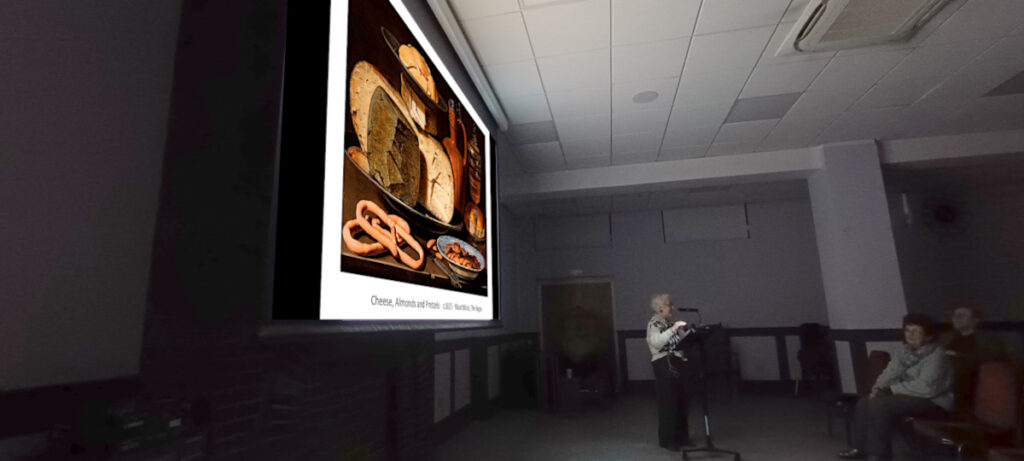
Clara Peeters specialised in Still Life paintings with an incredible eye for detail. Jennifer had prepared enlargements of many of the works with details that might otherwise have escaped the casual eye. For example, hidden in the picture above, the knife on the edge of the table has her name engraved into its edge, and her reflection can be seen in the metal lid on the water jug at the back of the composition.
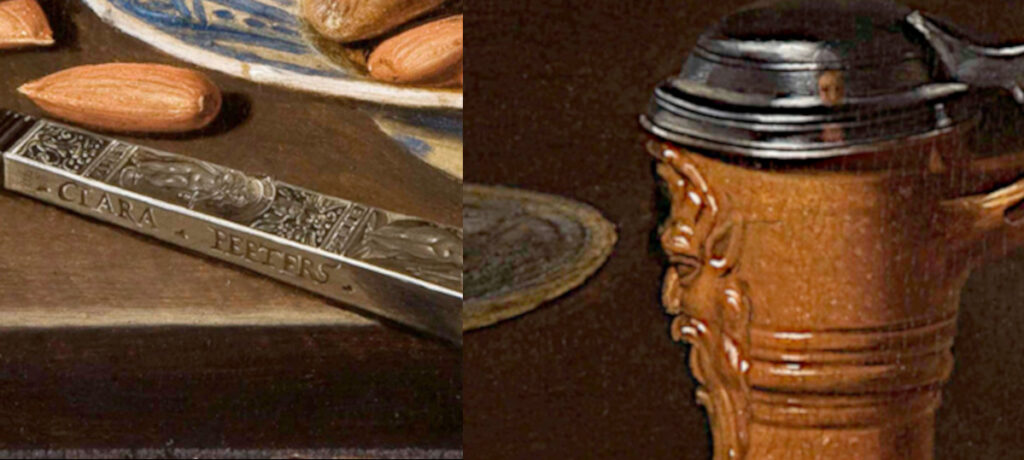
There were many paintings of food and drink, as well as dead game and flower arrangements. There were many examples of the Vanitas Compositions, highlighting the transience of life as compared to some of the objects pictured. She worked both in the Spanish Netherlands and the Dutch Republic, but there is a mystery about the date of her death.
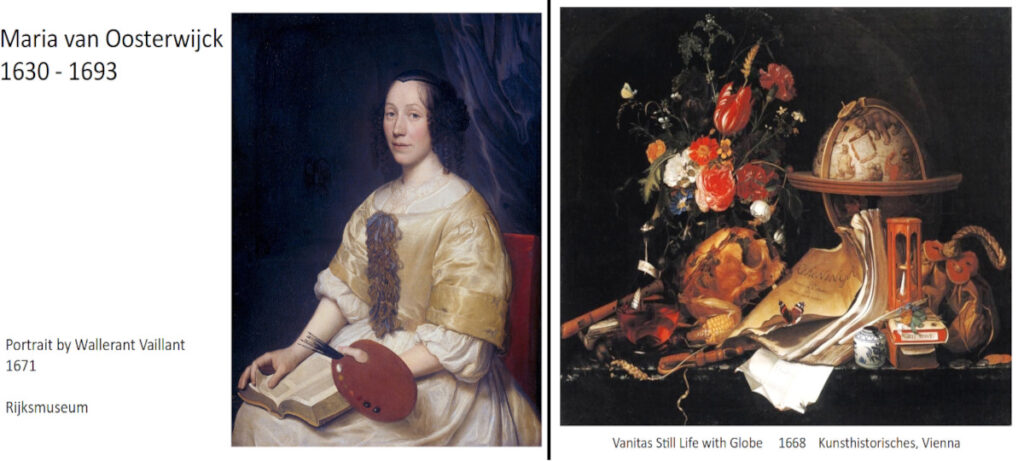
We then moved on to Maria von Oosterwijck who specialised more in vases of flowers, often depicting flowers in an arrangement that would not normally have been seen flowering together. In particular, she was renowned for painting tulips, but then she added insects and small mammals to some of her paintings. Often these require careful contemplation for the hidden creatures to be found. Her compositions also reflected the Vanitas theme.
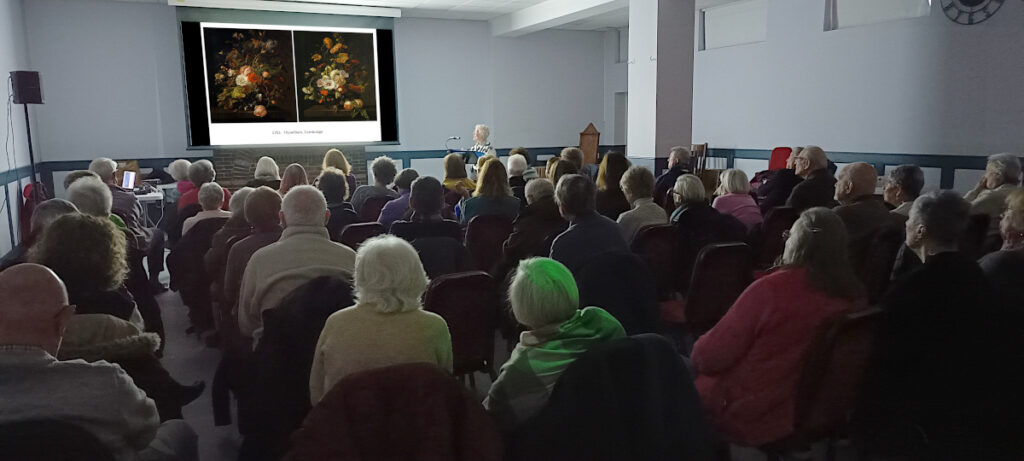
Next were the works of Rachel Ruysch, who also specialised in flower arrangements, but she abandoned the vases, preferring to paint the flowers lying on a marble slab or shelf. She was financially very successful as an artist, with some paintings selling in her lifetime for more than the cost of a house. She also won a lottery receiving an enormous amount of money. Many of her flower paintings are teeming with life when looked at very closely, with spiders, bees, caterpillars and butterflies. When examined closely, one can also find toads and lizards.
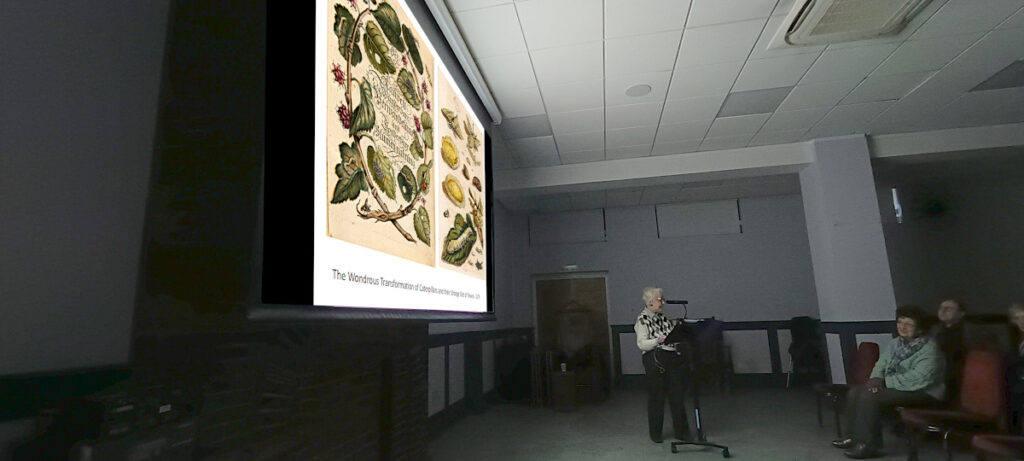
Then we were introduced to the works of Maria Sibylla Merian, an entomologist and a botanist who specialised in producing highly detailed engravings of plants and insects. She published many of the engravings in a series of volumes, and was assisted by the Dutch Government to record the plant and insect life in Surinam, just north of Brazil. Her father was a Swiss Engraver who had moved to Frankfurt am Main, and her stepfather was also an engraver from Nuremburg who took the family to Amsterdam. Again, the fineness and the detail of the engravings was most impressive.
After a short break for refreshments, we returned to view another picture in the National Gallery.
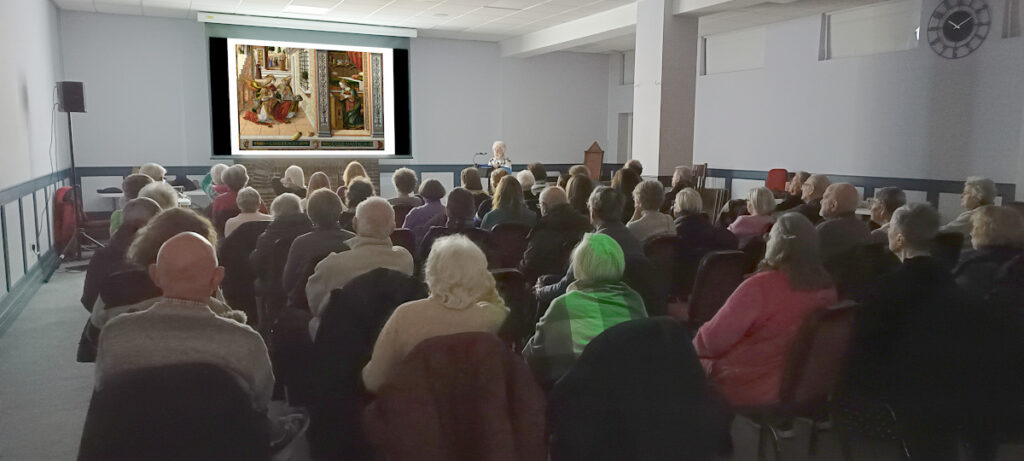
This time, it was The Annunciation with St Edimius by Carlo Crivelli, painted in 1491. An on-line version of the painting can be found on the National Gallery Website at this location. Whilst there are many anachronisms in the painting, particularly with regard to costumes worn by the characters, the painting is not just about the Annunciation by the Angel Gabriel to Mary. Rather it is about the announcement that the city of Ascoli Piceno had received some freedoms from papal control, and also the announcement that a Franciscan church would be built in the city as a result. Jennifer was able to enlarge many of the characters in the painting so that details of the patron of the church and the Franciscan friars depicted could be studied in detail, as could the visitation on the Holy Spirit on Mary.
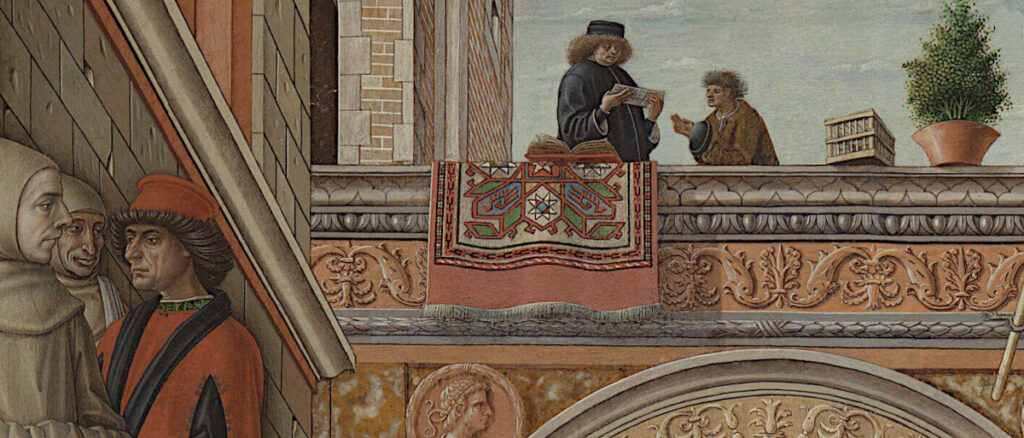
Our next session will be on Friday 21 February 2025 at 10:00am.

